It wasn’t until the first trailer for The LEGO Movie was released in June last year that the world finally had a handle on what the Phil Lord and Chris Miller animated pic actually ‘was’. Would it be stop motion? Part live action? Or fully CG?
What did emerge from that first trailer was the same sense of fun and excitement that LEGO users have enjoyed for decades. Behind the animation of a myriad of minifigures, vehicles and environments is Animal Logic, a studio with a rich history in both animated films (Happy Feet, Legend of the Guardians) and visual effects work (The Great Gatsby, 300, The Matrix). fxguide explores the making of The LEGO Movie with key members of Animal Logic’s team in Sydney.
What LEGO do you put in a movie about LEGO?
Just where do you start in a movie about the famous bricks? There were of course so many characters and settings from the LEGO world that the directors could draw from. According to the film’s production designer Grant Freckelton, Lord and Miller simply turned to what LEGO users did with it. “Chris and Phil’s first pitch was this is a movie about creativity,” he says. “It’s a movie about being a kid and approaching the world in a different and much more creative way than you might as an adult. It’s about exploring us as human beings.”
Characters (including Batman), vehicles and effects made up the animation challenges for Animal.
Given that approach, it was clear that for Animal Logic to accurately depict the LEGO world, they had to get hands-on with the real thing. And that’s exactly what they did – LEGO bricks were literally on just about everyone’s desk at the studio. In addition, research included a trip to LEGOLAND California, USA and a Tech Scout in LEGOLAND Billund in Demark. It was here that members of Animal’s team noticed at LEGOLAND that the outdoor models there were coated in a particular type of resin that might peel over time. “That was something we applied to some of our outdoor sets to make it oxidized and old and grundgey,” notes Freckelton.
In addition, Animal Logic took inspiration from Finnish photographer Vesa Lehtimäki (also known as Avanaut) who creates realistic scenes using LEGO, sometimes with ‘in-camera’ effects. “We actually talked to him,” recalls Freckelton, “and he described how Douglas Trumbull influenced his work by creating smoke tanks or much much smaller environments filled with much much more atmosphere than you would normally have. That was the same approach we took.”
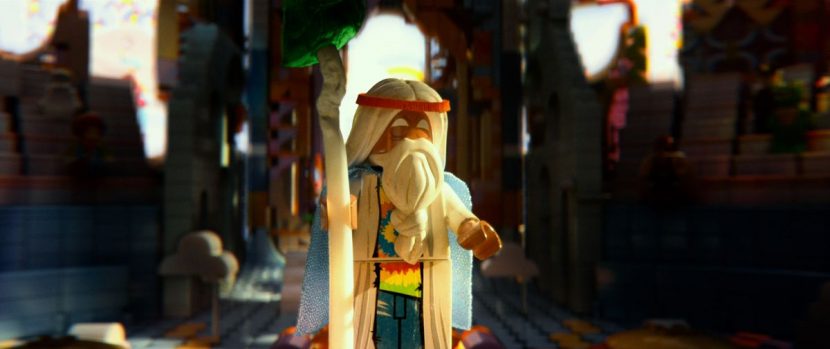
Building the LEGO of The LEGO Movie
LEGO is, of course, a colorful brick-based toy. In fact, the LEGO company adheres to strict color palettes that then had to be replicated in the film. But, as production designer, Freckelton says his color choices were not actually limiting. “The thing about LEGO is that it’s all about context,” he observes. “When you’re up close on something, when you put a yellow banana a minifig’s hand, in someone’s hand and it’s yellow, you can actually take that banana and stick a couple of studs on the end of it and it looks like a gun – it’s an interesting process of how you use them totally changes the way you perceive them in the movie.”
Watch a clip – Everything is Awesome – from the film.
To accurately portray LEGO characters and vehicles, Animal simply relied upon, unsurprisingly, the Danish company’s own freely available tool – LEGO Digital Designer. “Everyone, including our art department, could use LDD to mock up highly accurate LEGO models from which we could calculate the bricks that would be required, and build these as subdivision surface assets,” explains CG supervisor Aidan Sarsfield. “LDD was a perfect starting point as it uses the official LEGO Brick Library and effectively simulates the connectivity of each of the bricks.”
The next step in building the LEGO models was to convert the LDD file into a ‘shell’ of various types. Unlike the LDD models the shells would no longer be made of unique bricks, but rather a single mesh that had been optimized to remove hidden geometry. These shells were used downstream to build both characters and environments,” says Sarsfield.
Animal’s proprietary geometry format for this purpose is called ‘bobject’. “At the very front end it was a brick based approach”, says Sarsfield. “As it moves down the pipeline, that gets baked into more of a standard geometry approach, but we maintain the connection to the brick database – each one of the bricks is recorded in the model dataset.”
The actual brick modeling was done in Maya, with asset and layout builds achieved in Maya and XSI. “When we got into layout,” adds Sarsfield, “the team would position all the instances of the buildings and we would record that in a proprietary config file. The text file would specify where all the assets in an environment should go. Using these config files, and a detailed shot database. We would then construct all of those things into a shot for animation. The Animators would then get presented with the display versions of those shells – that’s all openGL optimized. They would then animate in XSI.”
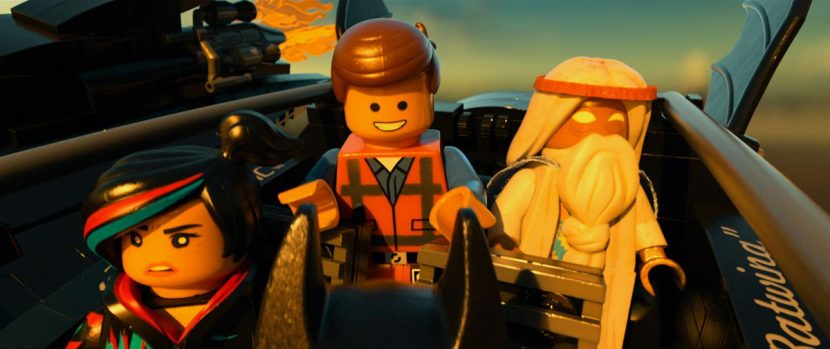
Interestingly, LEGO builds came at several stages in the process – from the art department, and the LEGO Group itself, the Asset Department, and even from animators who had the ability to re-conform bricks and pieces to construct background characters, especially in the Cloud Cuckoo Land sequence.
Having actual LEGO reference was crucial in the build process too, since Animal Logic could add details they saw in real models. At times they even placed the minifigures under microscopes to capture the seam lines, dirt and grime. “We spent an inordinate amount of time selling the detail,” describes Sarsfield. “At one point we were talking about putting serial numbers in there, which was crazy, but it does lend this incredible authenticity.”
Brick-laden environments
Just as the main players in the film were brick-based, so too were the buildings and environments. It is a world made of LEGO, after all. Realizing the design of fully-digital and geometrically complex environments was a task Animal Logic tackled head-on, but with some words of wisdom from the directors. The duo actually coined a term – ‘dumpressive’ – for the film’s design that required things to be (or which translates to be) “simple and to the point that it looks dumb but is also visually impressive,” says Freckelton.
This sequence from the film highlights just some of the LEGO world Animal Logic created.
For a scene requiring a vast canyon, for example, we began with landscape designs. “We would build a natural canyon and then filled it with bricks,” explains Freckelton, “but it ended up looking very aliased and noisy. We ended up looking at very simplified emaciated faces where they almost just felt like the old Looney Toons cartoons, and created landscapes that were sympathetic to the bricks, as opposed to taking an organic shape and just filling it full of bricks.”
“We developed some techniques,” adds Sarsfield, “that enabled the artists to build a surface and then use various controls to fill it with bricks. We could use color maps to drive the colors of the bricks and give us the stratification you see in canyon. That was really helpful for environments but for buildings we actually built them all very particularly.”
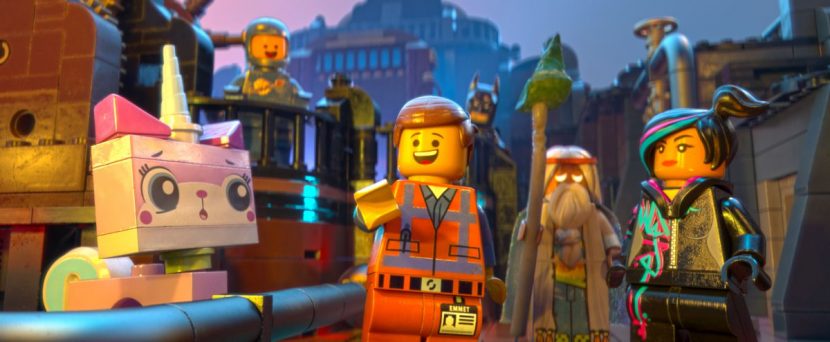
A LEGO world, but also a real one
Another key aspect of the film was the desire of the directors to depict a world that might exist if someone were actually playing with those LEGO pieces, and so would have to move things around in a hand-held way. “One of the big hurdles we wanted to solve was that we wanted the audience to believe they were seeing something that was real,” says cinematographer Pablo Plaisted. “So we did do a lot of research into what made stop motion films look real – what was the kind of visual language there and what that would mean for us.”
This interrogation scene made use of more frenetic camera moves to add nervousness to the sequence.
The result was a cinematic style that mostly evoked what could have been filmed with actual cameras in actual miniature environments. Animal Logic retained, for example, proxies to real world lenses in order to provide accurate depth of field. “We had the luxury of being able to turn it on and off at the push of a button,” notes Plaisted, “so we could compose the shots as we wanted to and worry about the depth of field as a second step. Minifigs also have very different proportions to people so a lot of the things you could apply in terms of framing were different.”
Although this was a CG film, Plaisted wanted to avoid the obvious computer controlled and floating camera seen in some animated movies. “There’s a subconscious language of cinema that people are used to,” he says, “and I think 3D cinematography can sometimes be ‘all on one axis’ and all pivoting from the same place. It’s quite powerful when you can get away from that. We had some virtual Steadicam rigs – they’re all keyframe animated – there wasn’t any live capture, but we used those to great effect, to really make you feel like there was a camera operator there.”
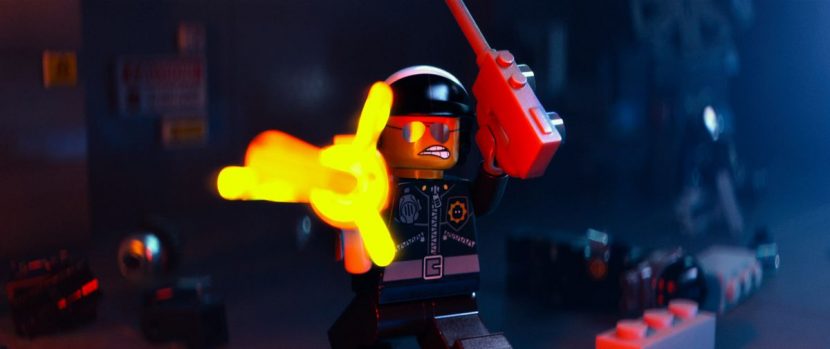
In developing the camera movement in The LEGO Movie, artists also took into consideration the final stereo presentation. “We were very conscious of the way you cut off a character at the edge of frame,” identifies Plaisted, “but not really in terms of staging. We had a really fluid process and we were able to experiment a lot which was a real luxury. In that sense it was pretty similar to a film in that you could get in there with the characters, block out something, talk to the directors and then keep iterating until we had something we were happy with.”
No restraint: animating The LEGO Movie
As plastic bricks and molded pieces, LEGO characters in real life typically have only certain degrees of articulation. But animated films often rely on techniques such as squash and stretch to bring characters to life. Ultimately, the fact that Animal Logic again was restrained to pre-determined movements also meant they could ‘stay true’ to the beloved characteristics of the toy. “LEGO is such a creative medium,” says Sarsfield. “There’s so many things you can do with it. I think that really came to the fore when we started doing animation. So despite the fact you don’t have squash and stretch and despite the fact you don’t have all these traditional antics to sell emotions, there’s a truth to the medium, so when you start animating these things, it’s like they’re the minifigs, it’s like the real thing – you can really get a sense of these little characters in your mind.”
A clip showing some of the animation rigs in Softimage.
In fact, the studio embraced the limitations quite wholly – ensuring characters were placed correctly on studs and in other positions. “We thought it was kind of cute that his arms would not wrap around the steering wheel and be away a little bit,” says Freckelton, “and he drove it as if a real LEGO character would do it. A big part of the movie was learning how to dumb it down a little bit and not overthink some of these concepts.”
The characters do, however, have faces that enabled them to talk, with the animators, working in Softimage, able to convey emotions in other ways as well. “The animators would want to do a shrug,” says Sarsfield, “and they would be like, how are we going to do that without collarbones or shoulders that deform? They would inevitably come up with a strange combination of an arm move and a torso and a head tilt that would imply a shrug, and when you were looking at the performance you would immediately get it as a shrug.”
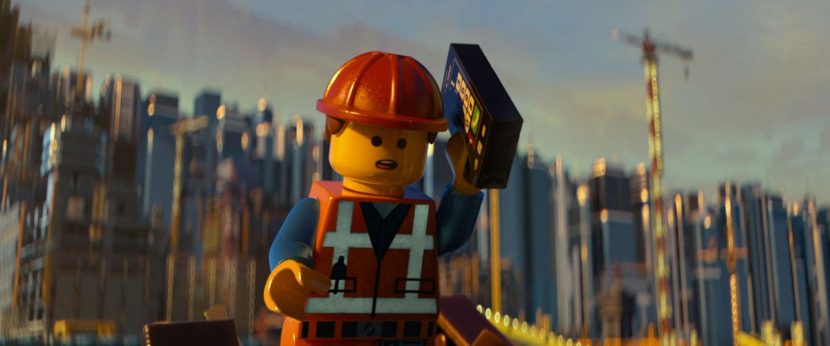
Animators also had the ability to bring additional bricks into their scenes, as Sarsfield explains. “So if there was a fight scene and one character hits another, the animator could easily import bricks such as a magic wand to use as a spark that comes off the face of the character. They had the ability to go and pull those bricks in completely arbitrarily.”
In order to mimic the stop-motion look of real LEGO figurines, a creative decision was made to not use motion blur. “A keen viewer will notice a little bit of softness,” advises Sarsfield, “a little camera blur, but it’s very minimal and called on for specific occasions by the art director.” What was used, however, was a kind of ‘brick blur’ for times when the characters moved very fast. Sarsfield, again: “Brick blur was created by a little strip of bricks. The colors of the character matched the string of bricks but the silhouette was defined as if someone has structured the motion blur with bricks.”
See the film’s directors react to an Animal Logic test of brick water.
In addition to character animation, moving elements in The LEGO Movie world were also all brick-based. That meant clouds and even water was made of bricks, as were moments when buildings had to blown into brick pieces. This effects animation was done in Houdini with special LEGO rules. “When you smash a LEGO building,” says Sarsfield, “it won’t smash into just bricks. Small sections will come apart and others will stay together. The effects team worked hard to accurately simulate the connectivity of the bricks. For any destruction, buildings would break apart randomly based on the actual structure of the model.”
Bricks, bricks, bricks, bricks
A stunning mix of plastic bricks and often frenetic action, the LEGO world also proved to be a highly demanding lighting and rendering challenge for Animal Logic. “Not only is the geometric detail complicated, but the actual material itself,” outlines Sarsfield. “There’s high levels of reflectivity refection and sub-surface scatter going on in all of the bricks to a varying degree.”
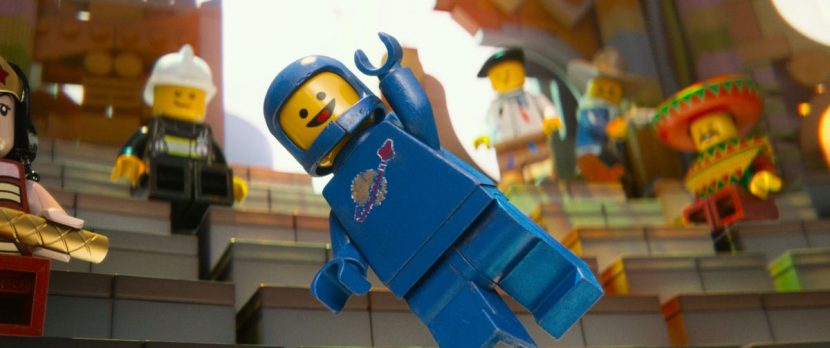
This meant that the studio had to devise ways to optimize the rendering pipeline. For any given shot Animal managed to cull large amounts of the geometry that did not contribute to the final look, but also they found great efficiencies in rendering by developing their own proprietary renderer. “Optimization came in the form of a proprietary renderer that we were initially going to use as a raytracing accelerator for PRman,” recounts Sarsfield, “but as we moved into production – as they started to develop this accelerator, it became apparent that we could push it into a primary renderer. By the end of the film I was saying to the team at LEGO we are the most efficient brick rendering facility in the world, without a doubt.”
This sequence highlights just some of the complex character and environment work required.
Ultimately, the proof was in the pudding. “When the first trailers came out and people started to question whether it was CG or stop motion, there were high-fives all-round,” says Sarsfield. “It was the first time in an animated film where people didn’t actually know how we’d done it – it was a really pleasant surprise for everyone involved.”
All images and clips copyright 2014 Warner Bros. Pictures.

Oh boy … that’s amazing. And it’s so nice to see Softimage been used to create such a great movie. AD is idiot for not developing anymore.
FXPHD, would love to see a return of the Animation course of Lucas Martell with Softimage. Wasn’t able to attend the first time.
Great coverage, guys. Thanks for this.
The cinematography has an anamorphic look to it, specifically the DOF. Did that come up in the discussion at all?
Very nice article. I saw the movie today and I was happy as a kid. I love the lighting and how they somehow managed to “legolize” even the smoke, water and fire effects.
I agree the Lego smoke and water fx were priceless… well – certainly worth the ticket price for sure !
Mike
Pingback: Unlocking the Inner Child & Thinking Outside the Brick: Behind the Scenes of The LEGO Movie
Pingback: Lego Movie!!! | WittworkS
Pingback: Let’s Talk: The Lego Movie | Animation Fixation
Pingback: What I read today – 3 May | rob pieké
Pingback: The LEGO Movie | Vikram Chati
Pingback: Legohydrodynanics | ***Dave Does the Blog
Pingback: OSVRT NA CANNES LIONS 2014 (prvi deo) – Zoran Krstić | VFX Serbia
Pingback: The LEGO Movie: Ways Boys Can Learn from It
Pingback: Movie Log Movie Blog: THE LEGO MOVIE, BIG HERO 6, THE BOXTROLLS, THE TALE OF THE PRINCESS KAGUYA | Small Talk at 26th & Rio Grande
Pingback: Vesa Lehtimäki (Avanaut) photography | LH Animation Presents…..
Pingback: VIEW Conference 2014 - Recap - WikiFX
Pingback: The LEGO Movie : Gros succès au box office US - Hoth Bricks
Pingback: Brick | MEDIAVOR